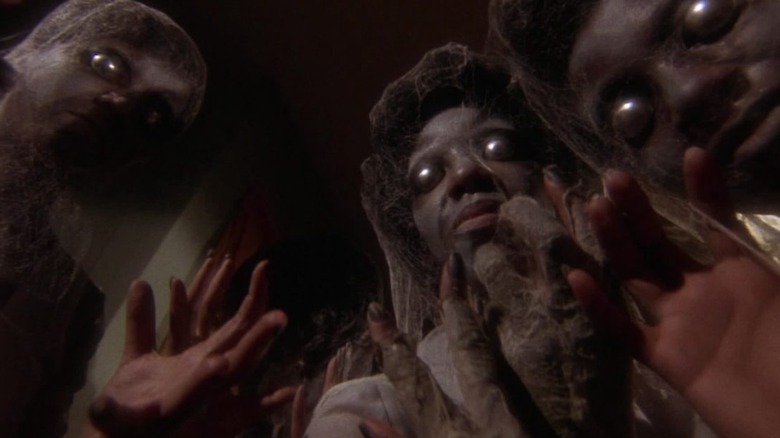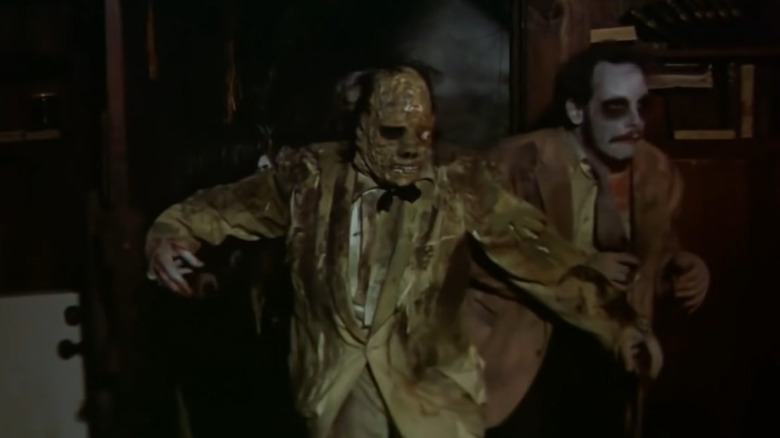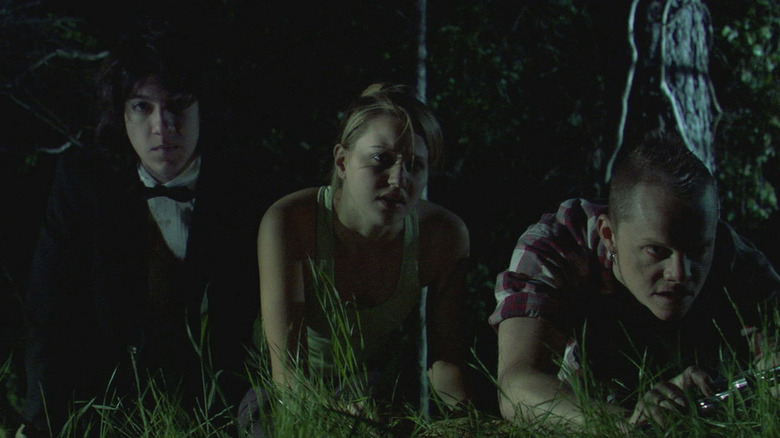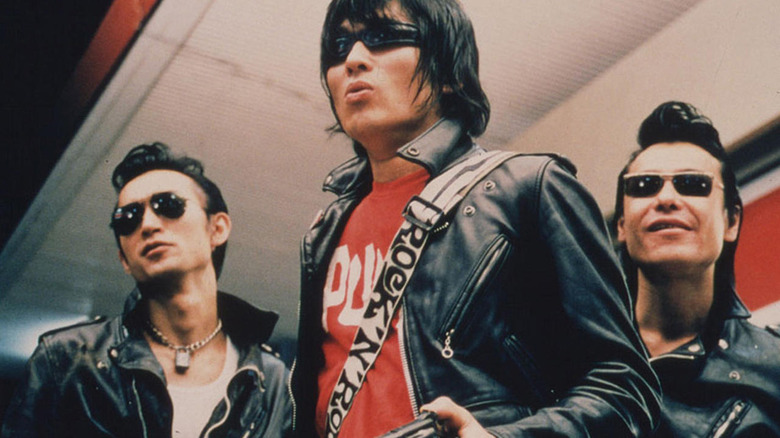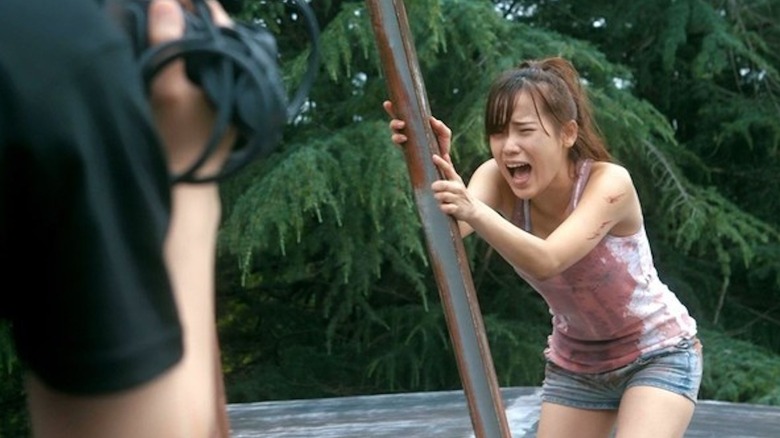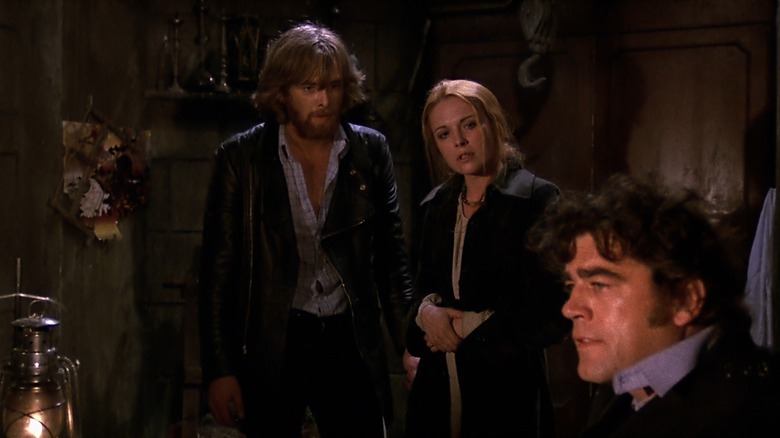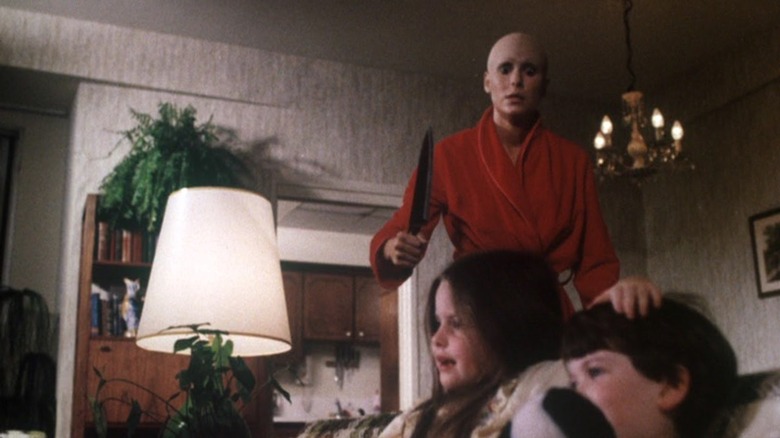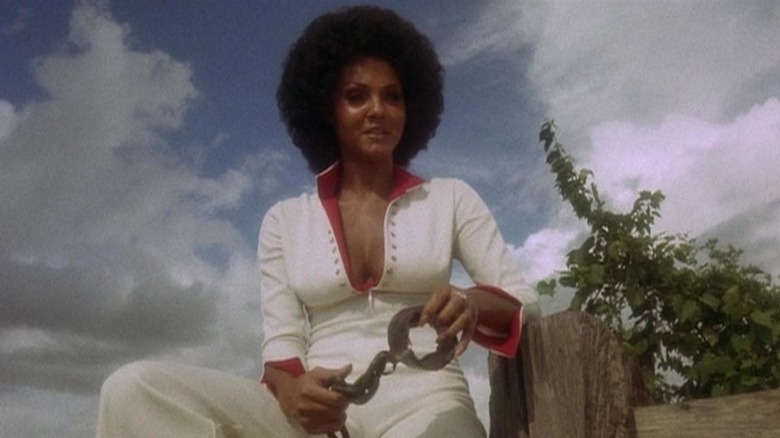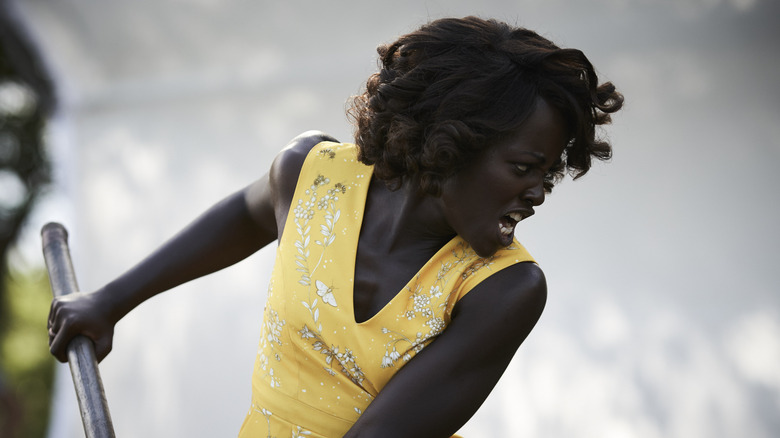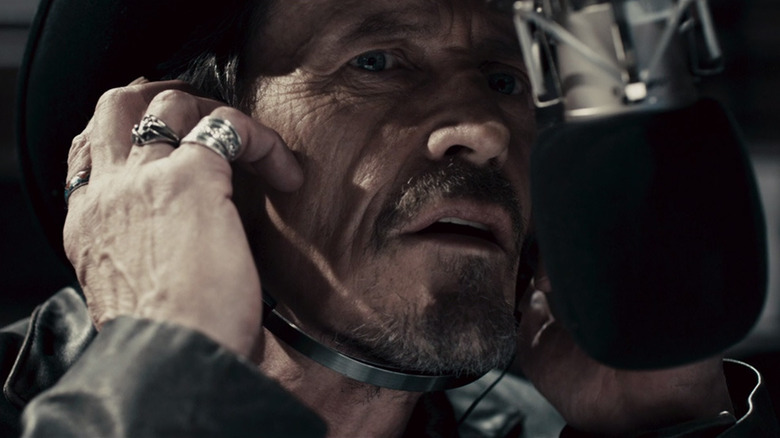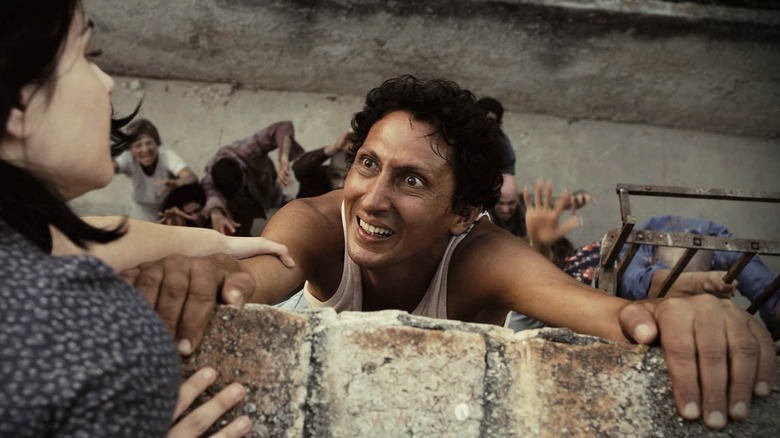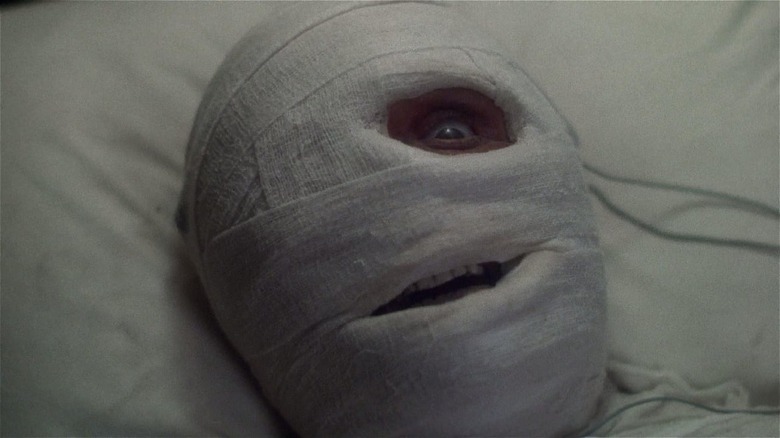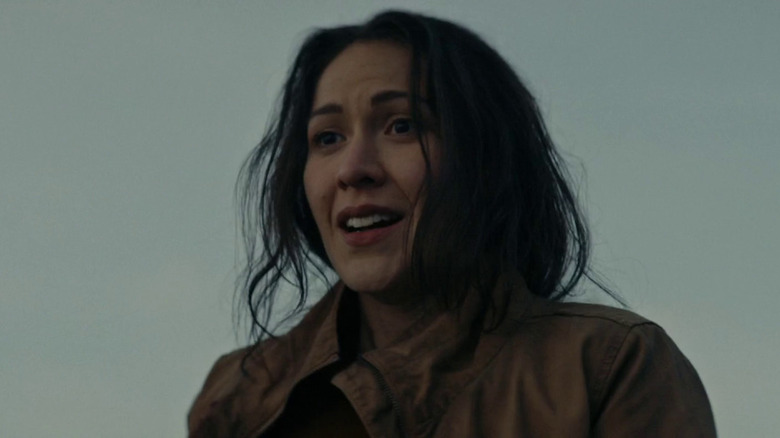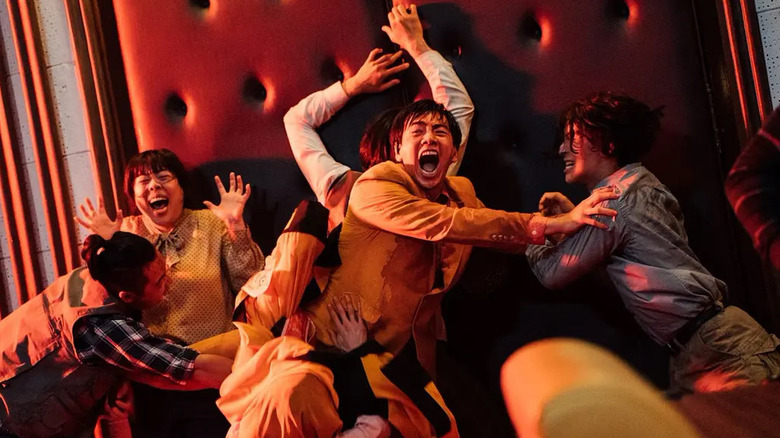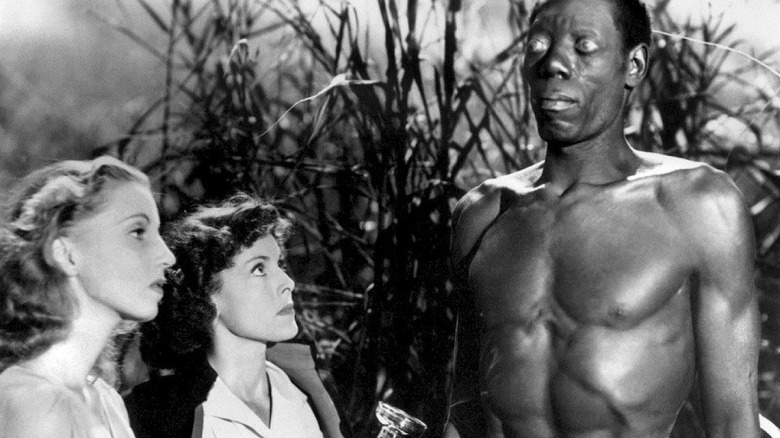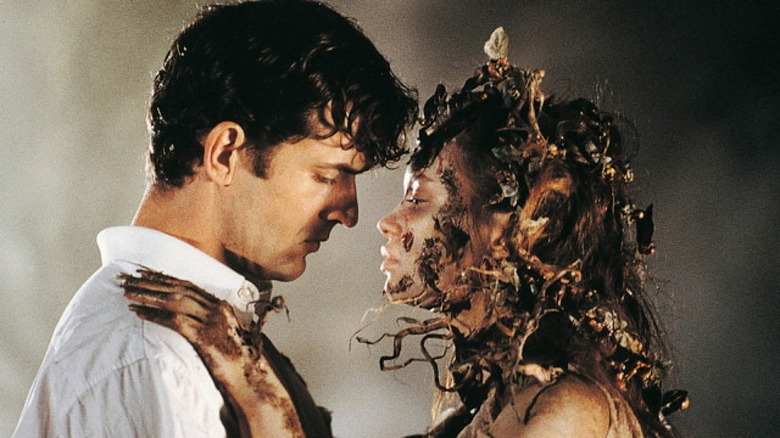15 Underrated Zombie Movies That You Really Need To See
Zombies have a long history in film, and just like the rest of the horror genre, the evolution of the zombie movie is a topographical study of political and sociological change. From the early appearance of zombies as anti-war symbols in 1919's "J'accuse!" through the Vodou zombies of 1932's "White Zombie," and from the shambling flesh-eaters of George A. Romero's seminal 1968 film "Night of the Living Dead" through the fast-moving rage zombies of Danny Boyle's 2002 epidemiological horror "28 Days Later," zombie movies are a constant but ever-changing staple of cinema.
While those classics of the subgenre make for excellent year-round horror viewing, there are so many underrated and/or underseen zombie movies that deserve your attention. This list highlights 15 of those films: stories about the undead that breathe new life into horror and raise new questions about politics, culture, and art, all while making you scared to walk past a cemetery.
Children Shouldn't Play with Dead Things (1972)
"What a perfect place for a mass murder!" Alan (portrayed by co-writer Alan Ormsby) is the director of a theatre troupe who decides to bring his cast and crew to an island cemetery for a night of jokes, witchcraft, and necromancy. Predictably, playing pranks in a graveyard and trying to raise the dead don't go well, and they find themselves besieged by real zombies after Alan's fake spell actually works. Filled with wry, morbid humor and a terrifying finale, "Children Shouldn't Play with Dead Things" proves that theatre kids are the real villains.
Many elements of the film come back in later zombie cinema. At one point, Alan abandons his actress Anya (Anya Ormsby, Alan's real-life wife at the time) to be eaten by zombies in a scene that bears more than a passing resemblance to the opening sequence of "28 Weeks Later." The film ends (spoiler alert!) with the zombies getting on boats to get to the mainland, recalling the finale of Lucio Fulci's "Zombie." The ending is horrific, with the undead rushing the camera in an uncomfortably visceral recreation of a zombie attack. With the film's sardonic humor, this odd horror-comedy makes for a fascinating watch.
Dance of the Dead (2008)
When corpses start returning to life in the graveyard next to a nuclear power plant, a group of misfit teens band together to save their high school prom. Director Gregg Bishop and writer Joe Ballarini take more than a few cues from "Return of the Living Dead" for their charming low-budget horror comedy. The punk band providing the soundtrack, the unlikely group of teens running from zombies, and the nuclear runoff (or military waste as in writer-director Dan O'Bannon's 1985 film) that creates ravenous hordes of zombies — these elements combine with a goofy sense of humor and a delightfully earnest approach to make a must-see zombie movie.
Though "Dance of the Dead" sets itself apart with its low-budget ingenuity and offbeat humor, it still has quite a few nods to earlier horror films: the aforementioned tips of the hat to "Return of the Living Dead," along with a jump scare straight out of "The Descent," a death scene similar to an iconic kill from "Day of the Dead," and the cathartic demise of an overly aggressive teen boy à la 1988's "The Blob." These references don't diminish the film's uniqueness, though. Rather, they bolster its regional charms. This is a movie that loves horror, and the cast of young, relative unknowns gives it a verve that is often missing from established studio films. Hilarious, sweet, and featuring a palpable joy for filmmaking, "Dance of the Dead" is a light-hearted zombie crowd-pleaser.
Wild Zero (1999)
Part '50s creature feature, part "Return of the Living Dead" homage, director Tetsuro Takeuchi and writer Satoshi Takagi's "Wild Zero" is the least predictable and most progressive film on this list. Anarchic and gloriously silly, "Wild Zero" has all the ingredients for a perfect midnight movie: hilariously cartoony gags; fist-pumping, "can you believe that just happened?" moments; and rock 'n' roll blood brothers fighting the undead.
Ace (Masashi Endō) is a huge Guitar Wolf fan, and when he helps the band during a skirmish, the guitarist (also named Guitar Wolf) makes him a blood brother. Ace meets a young woman named Tobio (Kwancharu Shitichai), and when they are attacked by zombies, Ace calls Guitar Wolf for help. Meanwhile, the band's vengeful former manager, The Captain (Makoto Inamiya), is hunting them down. He's fond of pageboy wigs, impossibly short shorts, and over-the-top violence. Between his wild performance and his equally wild wardrobe, he serves as a sentient visual gag.
There's sweetness at the core of all the humor. Ace and Guitar Wolf's blood bond is a sincere reminder of the healing power of rock 'n' roll, and Ace and Tobio's love story has its beautiful slogan. Tobio is trans, and as Guitar Wolf reminds Ace, "Love has no borders, nationalities, or genders!" That "Wild Zero" has a trans love interest who is treated with respect and sensitivity puts it head and shoulders among quite a few films as does its zany, punk rock zombie story.
One Cut of the Dead (2017)
Not only is writer-director Shin'ichirô Ueda's "One Cut of the Dead" one of the best zombie movies in recent memory. It's also a brilliant movie about movies. It's best to go in knowing as little as possible about this indie horror comedy, but the premise is that a small filmmaking crew makes a zombie movie at a site once used for military experiments involving the reanimation of corpses. The fake zombies become real zombies, and the cast and crew must fight off the bloodthirsty undead. Wildly original and utterly surprising, "One Cut of the Dead" belongs on any list of the best zombie movies.
"One Cut of the Dead" was so well-received that a French-language remake premiered at Cannes in 2022 (though /Film's verdict was, "Just go watch the original"). If it was so highly regarded, why is it on a list of underrated zombie movies? One of the criteria for this list is that a movie is underseen. It can be praised by everyone who watches it, but if enough people still haven't seen it — even if it's been remade by a studio at a much higher budget — then it qualifies for this list. While the film broke box office records relative to its budget, it still hasn't reached as wide an audience as it deserves. Inventive, hilarious, and completely in love with the art of making movies, "One Cut of the Dead" is a zombie movie that everyone needs to see.
The Living Dead at the Manchester Morgue (1974)
Director Jorge Grau's eerie ecological zombie movie is moody '70s Euro-horror that feels as prescient as all the best zombie films. A small English village starts using radiation as a form of pest control. That radiation makes its way to the Manchester Morgue, and the corpses start coming back to life. Many post-Romero zombie films follow the same basic formula: humans interfere with nature — whether by nuclear power, radiation, or biological experimentation — and disaster ensues. But "The Living Dead at the Manchester Morgue" stands out from the crowd due to its unnerving score and sound design, its terrifying zombies, and the sheer number of subplots that feel ahead of their time.
The focus on environmentalism combines with other themes to make "The Living Dead at the Manchester Morgue" one of the most intriguing movies on this list. There's a Satanic panic, as ignorant law enforcement officers suspect the zombies' victims of desecrating a graveyard themselves due to their supposed anti-Christian beliefs, tying into the film's decidedly anti-cop bent. When protagonists Edna (Cristina Galbó) and George (Ray Lovelock) discuss the investigation of the reanimated corpses, Edna asks, "Do you think the police are right?" George's response about a particularly truculent cop is "Never. Especially not him." Environmental fears, concerns over police misconduct, and the violent scapegoating of Satanic panics are all relevant issues today, making "The Living Dead at the Manchester Morgue" both a stylish '70s artifact and a relentlessly modern horror story.
Blue Sunshine (1978)
Written and directed by cult favorite Jeff Lieberman, "Blue Sunshine" takes a novel approach to zombies. A crooked politician named Ed Flemming (Mark Goddard) sold an exotic variant of LSD called Blue Sunshine to his college classmates several years ago. Now those same classmates are suddenly going bald and flying into homicidal rages. Jerry Zipkin (Zalman King) is falsely accused of committing the murders, and he goes on the run to find out what's really happening and clear his name. With morbid humor, bizarre visuals, and a healthy dose of paranoia, "Blue Sunshine" is a fascinating zombie film that perfectly captures the unease of post-Nixon American life.
Once again, a '70s zombie film feels eerily prescient. A bank of televisions plays Flemming's campaign ads, including a slogan that bleats, "It's time to make America good again!" The post-Watergate political conspiracy gives the film a creepy, mysterious feel, as paranoia seeps in through every frame. Lieberman adds a dash of surrealism to the proceedings: A puppet show at one of Flemming's campaign rallies fills the screen, increasing the sense of unreality and utter absurdity of the United States in the late '70s. A card at the end of the film tells the viewer that there are still 255 doses of Blue Sunshine unaccounted for, implying that there are at least 255 more latent killers on the loose, leaving the viewer unmoored and helpless against the corrupt ticking time bomb at the heart of America.
Sugar Hill (1974)
"Sugar" Hill (Marki Bey) is in love with Langston (Larry D. Johnson), the owner of popular nightspot Club Haiti. When mob boss Morgan (Robert Quarry) orders Langston's murder after he refuses to sell the club to him, Sugar takes her revenge on Morgan and his men with the help of Haitian Vodou practitioner Mama Maîtresse (Zara Cully). Mama calls on Baron Samedi (Don Pedro Colley), a deity who commands the dead. Baron Samedi's zombies dispatch Morgan and his men as Sugar revels in her righteous quest for vengeance.
Some of the earliest cinematic zombie stories focused on Vodou, but they were rarely told from the point of view of Black protagonists. As a Blaxploitation zombie movie, "Sugar Hill" shifts the story of zombies from mindless, voiceless Black characters to a story of Black heroes with agency who seek retribution against white villains who have wronged them. The film features some of the eeriest zombies on this list, with their bulging, glowing eyes and earthy, rotted frames.
While the zombies are frightening, they're also unique on this list as being agents of justice rather than frightening monsters. The zombies attack on Baron Samedi's commands, and he only directs them to devour the men responsible for Langston's death. With strong direction from Paul Maslansky, two unforgettable performances from Bey and Colley, and top-notch creature design, "Sugar Hill" is a pulse-pounding, cathartic combination of horror and revenge thriller, and a sterling example of Blaxploitation horror.
Little Monsters (2019)
This Australian film from writer-director Abe Forsythe is a cautionary tale. When a U.S. Army testing facility loses control of biological test subjects, zombies make their way to Pleasant Valley Farm. A group of young children is on a field trip to the farm, accompanied by their teacher Miss Caroline (Lupita Nyong'o) and Dave (Alexander England), the uncle of one of the students. Dave is a screw-up, and he initially spends more time insulting the children and hitting on Miss Caroline than helping the situation. When the zombie threat becomes obvious, though, Dave steps up and helps Miss Caroline convince the children that it's all just a game as they conga their way through fields of zombies and pass snarling corpses disguised as scarecrows.
"Little Monsters" is uproarious and surprisingly sweet. It features a tried-and-true (but still hilarious) comedy trope in Teddy McGiggle (Josh Gad), a saccharine children's entertainer who turns out to be selfish, lecherous, and the absolute last person you want in your bunker when the zombie apocalypse hits. It's a smart narrative choice, as it throws a live grenade into the already tense situation and manages to set up Dave, who initially seems irredeemable, as Miss Caroline's Prince Charming. Still, the true hero of "Little Monsters" is Miss Caroline, proving once and for all that teachers are undervalued and that when things take a turn for the worse, men can't be trusted.
Pontypool (2008)
Grimly funny, with dynamic direction from Bruce McDonald, "Pontypool" is a fascinating look at the virality of language. Tony Burgess' script, based on his novel "Pontypool Changes Everything," takes an avant-garde approach to zombies. They aren't infected by radiation or nuclear waste, nor are they resurrected by Vodou. In "Pontypool," certain words are infected, and hearing the wrong thing can turn people into mindless monsters. That's a problem for radio host Grant Mazzy (Stephen McHattie), who reports on the town's descent into chaos while trying to figure out how not to spread the contagion further.
McHattie gives a tour de force performance. Mazzy is a grizzled warrior poet stuck doing traffic and school closure announcements, frequently going off script to rant about the state of the world or speculate on the cause of the zombie outbreak. McHattie turns Burgess's lyrical dialogue into thunder and lightning. The film primarily takes place in Mazzy's claustrophobic recording booth, but between McDonald's direction and McHattie's performance, "Pontypool" rarely loses its crackling energy. The idea of "infected words" is fascinating, especially since English seems to be the only language affected, suggesting several routes of interpretation regarding the poisonous effects of cultural hegemony and the loss of nuance in a world that wants instantaneous answers. Mazzy's poetry stands in stark contrast to this loss of meaning. He does battle with the forces of meaninglessness, both in his daily life and his crusade to fight the zombies at his doors.
Juan of the Dead (2010)
Juan (Alexis Díaz de Villegas) is a survivor. A Cuban native, he survived fighting in Angola and the turmoil of the Special Period, and now he faces a new challenge that seems like business as usual: zombies. Juan is used to finding ways to thrive within chaos, so when he discovers that he and his friends are expert zombie killers, he sets up a business. He dispatches customers' zombified relatives, once again doing other people's dirty work for them.
Writer-director Alejandro Brugués packs a lot of political meaning into his horror comedy. The Cuban government identifies the zombies as "antisocial people in collusion with the U.S. empire," and the military attempts to force Juan and his friends to fight the threat for them. Though the story lags a bit in places, Brugués does a good job of balancing the competing tones. Juan alternates between action star, comedian, and unlikely hero, and Díaz de Villegas — who died in June of 2022 — handles each aspect of Juan's personality with grace and humor. The film holds an interesting combination of ideas and approaches to the zombie subgenre, and "Juan of the Dead" is a vital entry from an underrepresented country in horror cinema.
Dead & Buried (1981)
Potters Bluff is an odd town. It seems friendly on the surface, but visitors keep getting murdered. Townspeople surround them, photograph them, and kill them in gruesome ways. Sheriff Dan Gillis (James Farentino) can't figure out a possible motive or the identity of any of the killers. He enlists the local coroner, William Dobbs (Jack Albertson), to help him investigate. The investigation takes a turn for the even more bizarre when the murdered visitors turn up later, seemingly alive and happy as new residents.
"Dead & Buried" by director Gary Sherman and writers Ronald Shusett and Dan O'Bannon, is an odd and deliriously unsettling video nasty that still manages to shock and disturb over 40 years later. Shusett and O'Bannon wrote the original story for "Alien," and the visceral mixture of issues related to intimacy, death, class, and gender are just as present in "Dead & Buried" as they are in director Ridley Scott's 1979 classic. The death scenes are grisly and realistic, and the killers' use of photography contributes to the feeling that you're watching a snuff film. The film's finale only heightens that sense, as unforgettable images cascade across the screen as the characters — and the viewers — reel in disbelief. Shocking and timeless, "Dead & Buried" may not be as famous as O'Bannon's other work, but it deserves a spot in the zombie cinema canon.
Blood Quantum (2019)
Filmmaker Jeff Barnaby died in October of 2022, but he leaves behind a body of work that includes the essential zombie film "Blood Quantum." Simultaneously gruesome and gorgeous, the film shows a talented filmmaker in total control of narrative and visuals. The story follows a First Nations community in the middle of a zombie outbreak. The Indigenous characters discover that they are immune to the zombie virus, while white people are highly susceptible to it. The film is clear about its historical and political messages. The white colonizers are a horde of mindless monsters bent only on consumption and destruction, and true to their pattern of past behavior, they keep trying to sneak their sick and infected into the Indigenous stronghold that is (far too charitably for some characters) taking in refugees.
No one knows why the virus appeared, though Moon (Gary Farmer) has a theory: The Earth "turned these stupid ****ing white men into something she can use again. Fertilizer." The dialogue exemplifies the film's combination of brutality and poetry. There's an aching sense of humanity in the film. "Blood Quantum" does not revel in its zombie kills, focusing instead on the pain and the waste of human life. Yet, there's hope in the film as well, especially with the white characters — who are largely selfish and useless — being burned off like an infection ravaging the Earth, giving the Indigenous characters room to breathe and space to begin anew.
Get the Hell Out (2020)
"A wrong movie makes you suffer for only 90 minutes. A wrong government makes you suffer for four years." So begins the frenetic and hilarious "Get the Hell Out," a tongue-in-cheek satire of Taiwan's raucous parliament. Terrifyingly fast and ravenous zombies take over the parliament floor, and disgraced MP Hsiung (Megan Lai) must team up with Wang (Bruce Ho), the security guard who won her open seat and is secretly in love with her, to fight the bloodthirsty monsters. Hsiung is pretty much the only member of parliament who isn't corrupt. Her main reason for entering politics is to oppose the building of a chemical plant in her hometown — the very chemical plant that is now creating all these zombies by dumping its toxic waste illegally.
Like most of the films on this list, "Get the Hell Out" has sharp political messages. Unlike some of the more serious and frightening movies, though, its satire comes in a rapid-fire mélange of cartoon, video game, and game show aesthetics, complete with winking product placements and over-the-top visual effects. The tone and pacing can be overwhelming at times, but "Get the Hell Out" is a wild, fun ride that skewers modern politics with more than its fair share of blood, guts, and laughs. It's a hard movie to track down, but hopefully, it will soon see the physical media release it deserves.
I Walked with a Zombie (1943)
"I Walked with a Zombie" is one of the legendary collaborations between director Jacques Tourneur and producer Val Lewton for RKO Pictures. Betsy (Frances Dee) is a nurse hired to look after Jessica (Christine Gordon), the ill wife of Paul Holland (Tom Conway), a sugar plantation owner on the island of Saint Sebastian. The locals tell Betsy that Jessica mysteriously became a zombie shortly after Paul found out that she was having an affair. Most of the white characters look down their noses at the "superstitions" of Haitian Vodou, ascribing Jessica's zombie-like state to an unnamed fever, but the film makes it clear that it's the white colonizers who are ignorant about the ways that the world really works.
Betsy in particular is naïve and insensitive to the plight of the island's Black residents, whose ancestors were enslaved and who continue to work as servants for the white characters. Betsy is repeatedly depicted as ignorant and out of touch with reality. The Vodou rituals are not fetishized or exoticized. Rather, they seem more grounded than the privileged world the white characters inhabit. For a film made by white creators in 1943, "I Walked with a Zombie" has aged surprisingly well due in no small part to the talent and vision of Lewton and Tourneur as well as screenwriters Curt Siodmak and Ardel Wray, a woman who also frequently collaborated with Lewton.
Cemetery Man (1994)
The most bizarrely sexy film on this list, director Michele Soavi and writer Gianni Romoli's "Cemetery Man" is a true cult classic. Starring Rupert Everett as Francesco Dellamorte, the caretaker of a cemetery in a small Italian village, "Cemetery Man" is a dreamy reflection on life after death. Dellamorte's cemetery is prone to resurrecting the dead, and he spends his nights dispatching corpses. The mayor refuses to help, so Dellamorte goes about his lonely duty until he falls in love with a beautiful young widow (Anna Falchi). When she dies after being attacked by her late husband, Dellamorte begins to unravel, losing touch with reality and seeing the widow's face everywhere he goes.
Soavi's work with Italian horror master Dario Argento (Soavi was the assistant director on Argento's "Tenebrae," "Phenomena," and "Opera") shines through in "Cemetery Man." The film's unique framing and beautiful visuals contribute heavily to its cult status. It's an odd film, swooning over death rather than running from it. Dreamy shots of fabric blowing in the wind or reflections undulating in a rippling pool sometimes make it seem more like a Gothic romance than a zombie horror movie. Death is seen as a natural force. The zombies have roots growing out of them, and when the widow is reanimated, she's just as beautiful in death as in life. "Cemetery Man" can be an acquired taste, but it is a visually stunning film with an intriguing mix of ideas swirling at its center.
